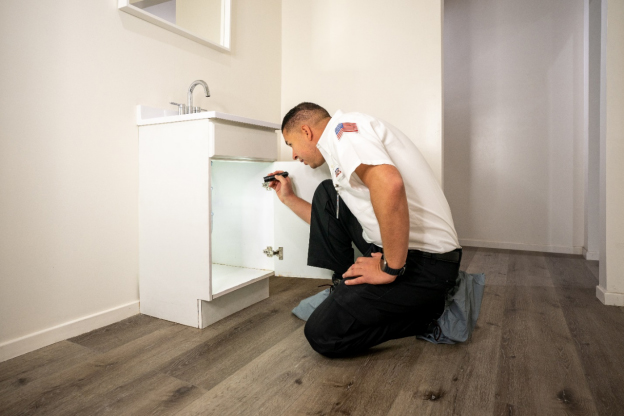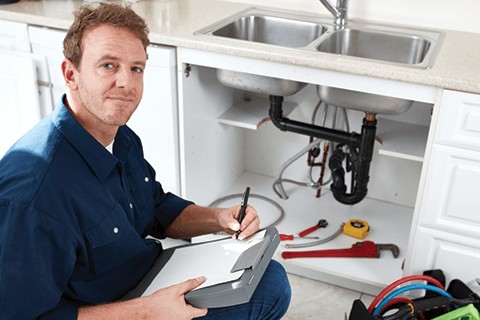To DIY or Not to DIY?
To DIY or Not to DIY?
Blog Article
Just how do you feel in relation to DIY vs. Professional Plumbing Repairs: When to Call a Pro?

Introduction
Pipes concerns can range from small aggravations to major frustrations, often motivating property owners to decide between dealing with the trouble themselves or hiring an expert plumbing professional. Knowing when to do it yourself and when to seek professional assistance can conserve time, cash, and avoid possible disasters. This article checks out the factors to take into consideration when making this critical decision.
Advantages of DIY Pipes
Tackling pipes tasks yourself can be gratifying in several methods, specifically for simpler tasks.
Price Financial savings
Do it yourself pipes tasks typically conserve money by preventing professional service charge. Jobs like fixing small leakages, changing faucets, or setting up brand-new showerheads are instances where property owners can manage fixings without hiring a plumbing technician.
Skill Enhancement
Taking part in DIY plumbing provides an opportunity to discover and boost sensible abilities. Basic tasks empower house owners to understand their pipes systems better and gain self-confidence in managing little fixings individually.
Threats of Do It Yourself Pipes
While DIY projects provide benefits, specific risks must be very carefully considered before attempting repair services.
Complexity of Tasks
Some pipes problems call for specific knowledge and devices past typical property owner abilities. Messing up complicated troubles can cause additional damages and pricey repair work.
Safety and security Issues
Dealing with pipes systems includes risks such as exposure to water damages, possibility for electric risks, and taking care of tools incorrectly. Safety and security precautions should be observed to prevent crashes and make certain effective fixings.
Indicators to Call a Specialist Plumbing Technician
Acknowledging when a pipes problem surpasses do it yourself capabilities is critical to preventing aggravating problems.
Indications of Complex Problems
Instances include:
Prompt expert treatment is required to resolve these problems properly and reduce damage.
Do It Yourself Pipes Tips
For effective do it yourself pipes, it's necessary to be prepared with the right tools and adhere to correct treatments.
Basic Tools and Products
Trick devices for do it yourself pipes:
Step-by-Step Guides
Clear guidelines make sure risk-free and effective do it yourself fixings:
Picking the Right Time to Do It Yourself
Identifying when to take on plumbing jobs on your own requires analyzing both the complexity of the problem and individual comfort degrees.
Analysis Checklist
Think about:
When to Definitely Call a Specialist
Particular scenarios require prompt experienced focus to avoid extensive damages or security threats.
Examples include:
Searching for and Employing a Specialist Plumbing Technician
Picking a qualified plumbing technician makes certain trustworthy solution and peace of mind in solving plumbing concerns.
Standards for Choice
Aspects to think about:
Price Evaluation: DIY vs. Expert Providers
Contrasting the monetary implications of DIY initiatives versus expert plumbing services assists in making educated choices.
Financial Considerations
Evaluate:
Conclusion
Deciding whether to do it yourself or call a specialist plumbing professional hinges on comprehending the intricacy of plumbing problems and individual abilities. By weighing the advantages and threats, homeowners can make educated selections that promote reliable upkeep and safeguard their homes from plumbing catastrophes.
DIY Plumbing Projects: What Homeowners Can Do and When to Call a Professional
Welcome to our comprehensive guide on DIY plumbing projects. In this blog post, we aim to empower homeowners with the knowledge and skills to tackle basic plumbing tasks around the house. From unclogging drains to fixing a leaky faucet, we’ll walk you through step-by-step instructions on how to handle these common issues.
However, not all plumbing problems can or should be solved with a DIY approach. Recognizing when a problem is beyond your skill level and requires professional intervention is just as important as knowing how to perform basic tasks. We’ll also discuss the signs that indicate it’s time to put down your tools and pick up the phone to call a professional plumber. By understanding when to DIY and when to call a professional, you can save time, avoid potential disasters, and ensure your home’s plumbing system remains in top shape.
Understanding Plumbing Basics
Before we dive into the DIY projects, let’s take a moment to understand the basics of your home’s plumbing system. A typical residential plumbing system consists of two major components: the water supply system, which brings fresh water into your home, and the drainage system, which removes waste water. These systems are made up of a network of pipes, valves, and fixtures that work together to deliver clean water and dispose of waste efficiently.
Regular maintenance of your plumbing system is crucial to prevent minor issues from escalating into major problems. This includes tasks like checking for leaks, removing minor clogs, and ensuring your pipes are insulated for winter. By performing these tasks regularly, you can extend the lifespan of your plumbing system, save money on water bills, and maintain the comfort and hygiene of your home.
In the following sections, we’ll explore some common DIY plumbing projects that homeowners can handle, as well as situations that require the expertise of a professional plumber. Whether you’re a seasoned DIY enthusiast or a beginner, this guide will provide you with valuable insights into the world of home plumbing.
DIY Plumbing Projects Homeowners Can Handle
Plumbing may seem intimidating, but there are several tasks that homeowners can confidently tackle with a little guidance and the right tools. Here are a few common issues you might encounter and how to address them.
Unclogging Drains
Use a Plunger: This is your first line of defense. A good old-fashioned plunger can dislodge the obstruction and clear the drain in many cases. Try a Plumber’s Snake or Hand Auger: If the plunger doesn’t work, a plumber’s snake or hand auger can reach deeper into the pipe to break up the clog. Use a Drain Cleaner: If physical methods fail, a chemical drain cleaner can dissolve the clog. However, use these products sparingly as they can damage your pipes if overused.

I hope you enjoyed reading our piece on When to DIY and When to Call in the Plumbing Pros. Thanks a lot for taking time to read our piece. Sharing is caring. You just don't know, you may very well be helping someone out. Thank you for your time. Please stop by our blog back soon.
Book Instantly Report this page